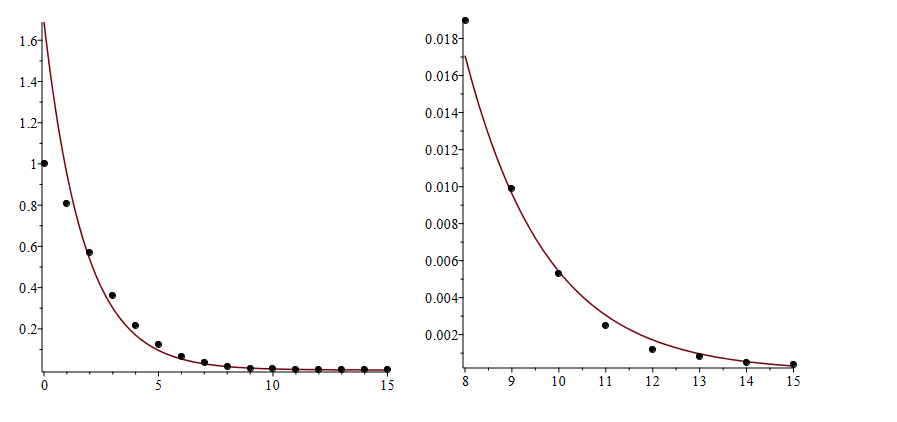The chance that a single line avoids the tilted square with corners $(1/2,0),(1,1/2),(1/2,1),(0,1/2)$ (of area $1/2$) is $1/6:$ With probability $1$, the point first chosen is not a corner of the original square or the tilted one. wlog it is on the left half of the bottom. Then the second point needs to be on the lower half of the right side. The chance of this is 1/6. So the chance that none of $n$ lines cut the tilted square is $$\frac1{6^{n}}.$$
This can be improved to $$\frac4{6^n}=\frac2{3\cdot 6^{n-1}}$$ by considering instead isosceles right triangles. The chance that the first line crosses two adjacent sides is $2/3.$ If this does happen then one of the diagonals misses this line and splits the square into two isosceles right triangles with area $1/2.$ One is cut and the other intact. For every subsequent choice the first point is outside the intact half with probability $1/2$ and the second with probability $1/3.$
Here is a certain octagon along with the circle with center $(\frac12,\frac12)$ and radius $\frac1{\sqrt{2\pi}}.$
 I find that the octagon above is the best of its kind. I get that the probability it stays intact is about $$(\frac{2(0.4797667)}3)^n=0.31984^n.$$ The lower left corner is at about $(0.32606,0.11670).$
I find that the octagon above is the best of its kind. I get that the probability it stays intact is about $$(\frac{2(0.4797667)}3)^n=0.31984^n.$$ The lower left corner is at about $(0.32606,0.11670).$For the octagon, and also the circle, the exact probability of a line missing it can, in principle, be found using several integrals. They are not that nice so I evaluated them numerically. The probability of a line missing the circle is about $.34470989$ hence $$0.34470989^n.$$
Perhaps some shape of the form $t$circle+$(1-t)$octagon beats the circle. However another octagon might do even better for that process.
Perhaps some shape of the form $t$circle+$(1-t)$octagon beats the circle. However another octagon might do even better for that process.


